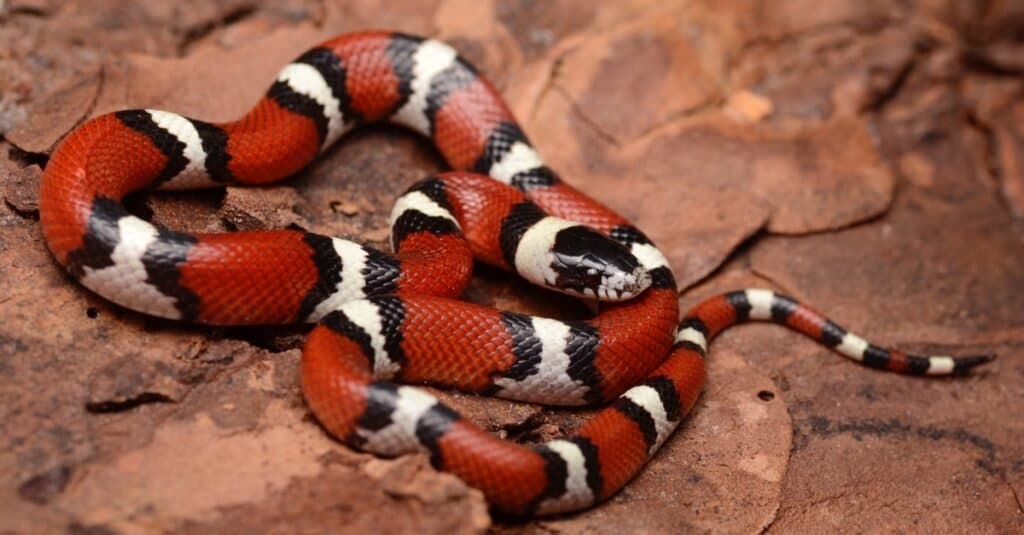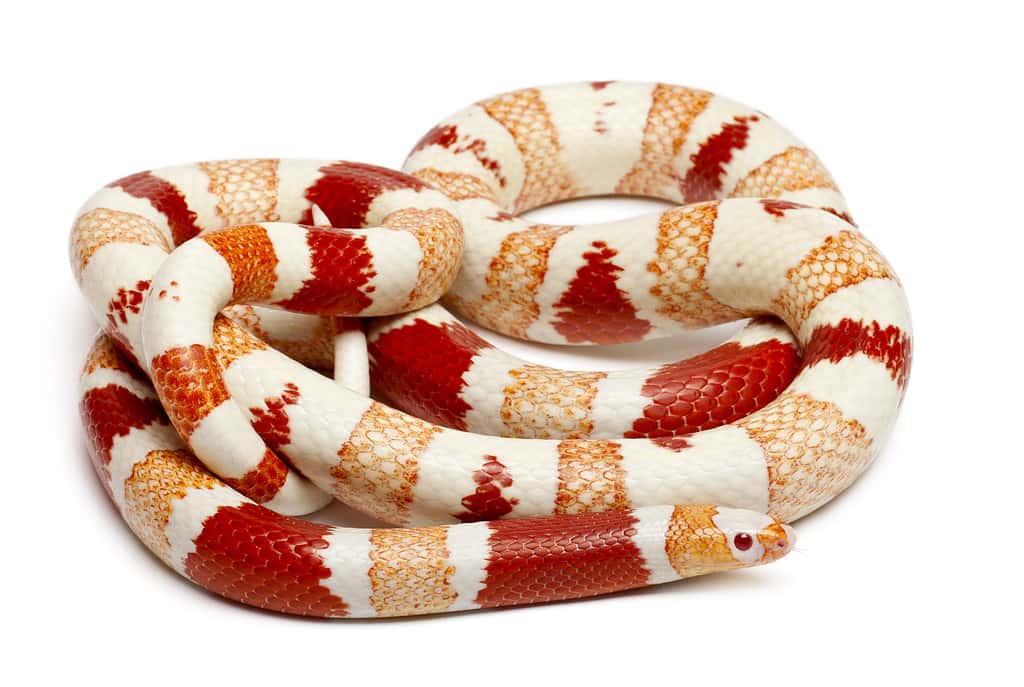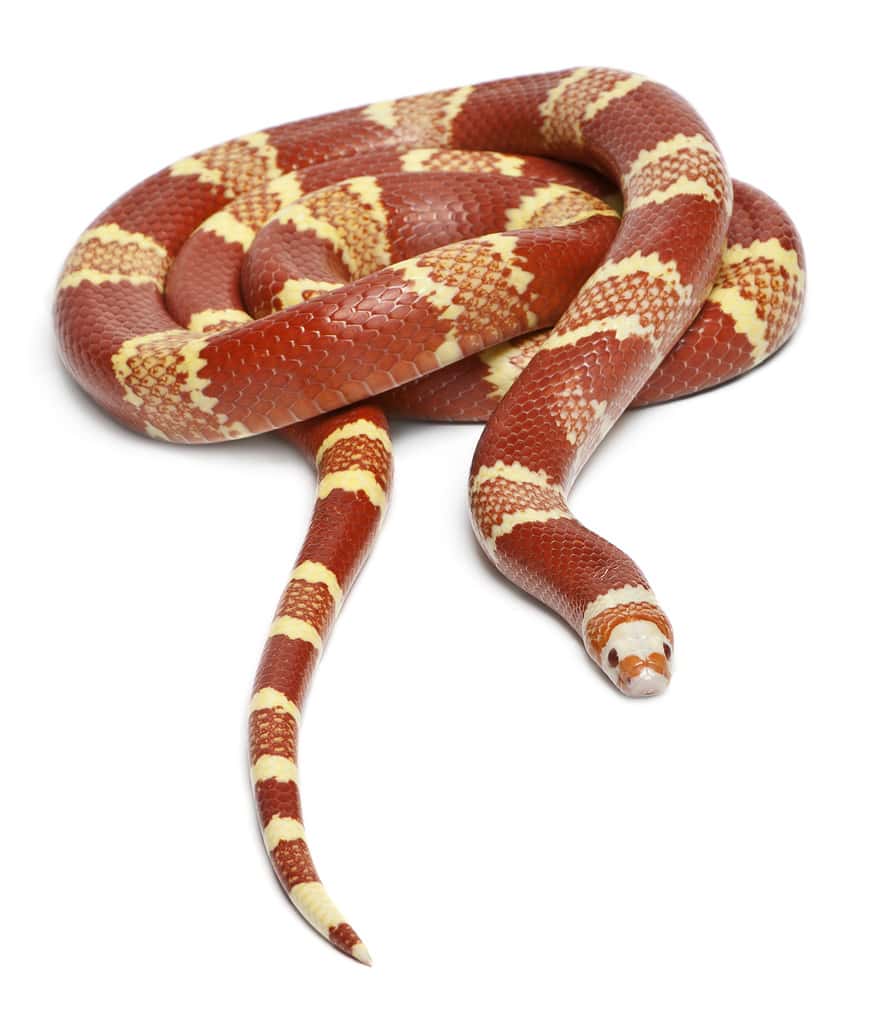There are tons of milk snake morphs. In fact, there are probably more than you can count. Ever since people started breeding these snakes in captivity, more and more morphs have appeared and then been selectively bred.
Even today, more morphs are appearing all the time, often by accident. Once they appear, advertisements for them increase their popularity.
Below, we’ll go over many of the popular milk snake morphs. However, you should realize that these morphs change all the time.
1. Normal Type

Many types of milk snake species are kept as pets. Morphs are slightly different from species, as they are just
colordifferences – not a new species. The Honduran milk snake is the most common species kept in captivity.
©TheTexasNaturalist/Shutterstock.com
A normal milk snake is, well, normal. It’s known as the wild type, as this is what these snakes look like in the wild. Therefore, they aren’t the most exciting and are typically the best representation of the species.
These snakes have vibrant bands of red, black, and yellow, which run along the length of their body. These are distinct and appear in a pattern. This coloration is considered classic and is still very popular.
2. Albino

Albino Honduran milk snakes are relatively common. Unlike what you might expect, these snakes are not
completelywhite.
©GlobalP/iStock via Getty Images
You’ve likely seen these snakes at least a few times. They have mostly white or cream-colored bodies due to a lack of melanin pigmentation. Their bands are usually red and yellow (if they have bands). The absence of darker colors makes them appear extremely similar to the wild type but with slightly different colors.
3. Tangerine Albino

This milk snake morph is slightly orange-tinted, hence their name of “tangerine.” They’re one of the rarer options on this list.
©GlobalP/iStock via Getty Images
This slight variation from albino is strikingly similar. However, they have a very intense, vivid orange or tangerine hue on their bands. This variation is very bright and eye-catching, which is one reason for its popularity.
That said, it isn’t as common as other options on this list, so it may be more challenging to find.
4. Hypomelanistic
These snakes have reduced pigmentation, but they still have some coloration. Therefore, they’re a mix between a wild type and an albino snake. They have a lighter, less saturated coloration.
They still retain the classic red, black, and yellow banding. However, they aren’t as intense. Therefore, the snake has a subdued coloring, but not significantly.
5. Anerythristic
These milk snakes are striking in their own right, but they aren’t nearly as dramatic as some of the other options on this list. They lack red pigment completely, which eliminates some of the colors on their bands. They are primarily black and white or black and grey, depending on the exact snake.
The absence of red creates a very monochromatic pattern, making them a little less dramatic than others.
Summary of Milk Snake Morphs
| Number | Morph |
|---|---|
| 1 | Normal/Wild Type |
| 2 | Albino |
| 3 | Tangerine Albino |
| 4 | Hypomelanistic |
| 5 | Anerythristic |
The photo featured at the top of this post is © Nathan A Shepard/Shutterstock.com
Discover the "Monster" Snake 5X Bigger than an Anaconda
Every day A-Z Animals sends out some of the most incredible facts in the world from our free newsletter. Want to discover the 10 most beautiful snakes in the world, a "snake island" where you're never more than 3 feet from danger, or a "monster" snake 5X larger than an anaconda? Then sign up right now and you'll start receiving our daily newsletter absolutely free.
Thank you for reading! Have some feedback for us? Contact the AZ Animals editorial team.







